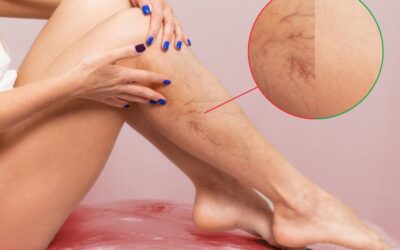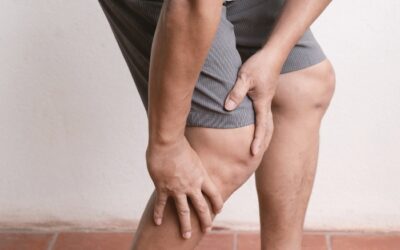Have you ever ended a long day and felt like your legs were carrying extra weight, almost as if they were made of lead? That heavy feeling in the legs is a common experience, but it’s more than just fatigue. Persistent heaviness can indicate an underlying vein or vascular issue, such as chronic venous insufficiency or varicose veins. Understanding the causes, symptoms, and ways to manage this condition can help you maintain leg health and prevent complications.
This article will explore the reasons behind a heavy feeling in the legs, highlight the risk factors, discuss common symptoms, and provide practical tips to alleviate discomfort.
Table of Contents
- What Does “Heavy Feeling in the Legs” Mean?
- Common Causes of Heavy Feeling in the Legs
- Risk Factors That Contribute
- Symptoms Accompanying Heavy Legs
- How This Condition Is Diagnosed
- Ways to Manage & Alleviate the Heaviness
- When to Consult a Specialist
- Final Thoughts
1. What Does “Heavy Feeling in the Legs” Mean?
A heavy feeling in the legs goes beyond normal tiredness. It is often described as a dragging, aching, or weighted sensation, primarily in the lower legs and feet. In many cases, this discomfort signals that blood flow in the veins is not efficient, causing blood to pool in the legs. This condition can develop slowly and worsen over time if left unaddressed.
Chronic venous insufficiency (CVI) is a common cause. It occurs when the valves inside the veins fail to function properly, leading to backward blood flow and increased pressure in the leg veins. Over time, this can result in discomfort, swelling, and visible varicose veins.
2. Common Causes of Heavy Feeling in the Legs
Several factors can lead to a heavy feeling in the legs:
- Chronic Venous Insufficiency (CVI): Weak or damaged vein valves allow blood to pool, creating pressure and heaviness.
- Varicose Veins: Bulging, twisted veins are not only a cosmetic issue but also a sign of compromised circulation.
- Poor Circulation / Venous Stasis: Reduced blood flow can result from sedentary behavior or prolonged standing.
- Past Blood Clots (DVT): A history of deep vein thrombosis can damage valves and increase heaviness in the legs.
Other Factors:
- Aging: Vein valves weaken naturally over time.
- Obesity: Extra weight puts pressure on veins.
- Hormonal Changes: Pregnancy or menopause can impact vein health.
- Prolonged Standing or Sitting: Both reduce circulation and increase vein pressure.
3. Risk Factors That Contribute
A heavy feeling in the legs can be influenced by several risk factors. Genetics and family history play a significant role, as vein problems often run in families. Older age is another common factor, since vein valves naturally weaken over time. Women may be more susceptible due to hormonal changes associated with pregnancy, menopause, or birth control, which can affect vein health. A history of blood clots or deep vein thrombosis (DVT) can also contribute, as prior clots may damage vein valves and impede circulation. Additionally, being overweight or obese increases pressure on the leg veins, while a sedentary lifestyle or jobs that require prolonged standing or sitting can slow blood flow, further promoting the heavy sensation in the legs.
4. Symptoms Accompanying Heavy Legs
People experiencing a heavy feeling in the legs often notice a combination of discomfort and visible changes. Common symptoms include aching, cramping, or throbbing sensations, sometimes accompanied by swelling in the ankles or lower legs. Tingling, burning, or itching may occur, especially in areas affected by varicose veins, which can appear as bulging, twisted veins under the skin. Over time, skin changes such as discoloration or even ulcers may develop if the condition worsens. Many individuals notice that symptoms intensify toward the end of the day or after long periods of standing or sitting. Elevating the legs regularly can provide temporary relief and help reduce pressure in the veins.
5. How This Condition Is Diagnosed
If you experience a persistent heavy feeling in the legs, a vein specialist typically begins with a thorough medical history and physical examination. This helps the doctor understand your symptoms, lifestyle factors, and any relevant risk factors, such as previous blood clots. Diagnostic tools like Doppler ultrasound or duplex ultrasound are commonly used to evaluate blood flow and check for valve function in the veins. In some cases, additional tests may be recommended depending on the severity of the symptoms or history of vascular issues. Early diagnosis is important, as it can prevent the condition from progressing and reduce the risk of complications such as skin changes, venous ulcers, or worsening discomfort.
6. Ways to Manage & Alleviate the Heaviness
Managing a heavy feeling in the legs usually involves a combination of lifestyle changes and medical interventions. Staying active through walking, stretching, and specific leg exercises helps improve circulation and prevents blood from pooling. It is also important to avoid prolonged sitting or standing by taking frequent movement breaks, as well as elevating the legs when resting to reduce pressure and swelling. Maintaining a healthy weight can further decrease strain on the veins.
Compression therapy, such as wearing compression stockings, is another effective way to improve blood flow and reduce leg heaviness. Proper skin care is essential, especially if there is swelling or dryness, and monitoring for changes like discoloration or the development of ulcers can prevent complications. For more severe cases, minimally invasive medical procedures such as endovenous ablation or sclerotherapy may be recommended by a vein specialist to treat underlying vein problems and restore proper circulation.
7. When to Consult a Specialist
Seek medical evaluation if:
- Heavy legs persist despite lifestyle changes
- Swelling, pain, or skin changes occur
- There is a history of blood clots or deep vein thrombosis
- Visible varicose veins or ulcers appear
A vein specialist or vascular doctor can assess your condition and recommend the best treatment options.
8. Final Thoughts
A heavy feeling in the legs is often more than just fatigue — it can be a sign of underlying vein problems. Early recognition, lifestyle modifications, and professional evaluation can help manage symptoms and prevent serious complications. Taking proactive steps toward vein health can improve daily comfort and long-term well-being.
If you’ve been experiencing a persistent heavy feeling in your legs, contact Premier Vein & Vascular Center today for a comprehensive evaluation. Our team of experts can assess your vein health and recommend personalized solutions — from non-invasive therapies to minimally invasive procedures — to help you regain comfort and mobility.
Disclaimer: This article is for informational purposes only and does not constitute medical advice. Please consult a qualified vein specialist at Premier Vein & Vascular Center for personalized evaluation and treatment.


